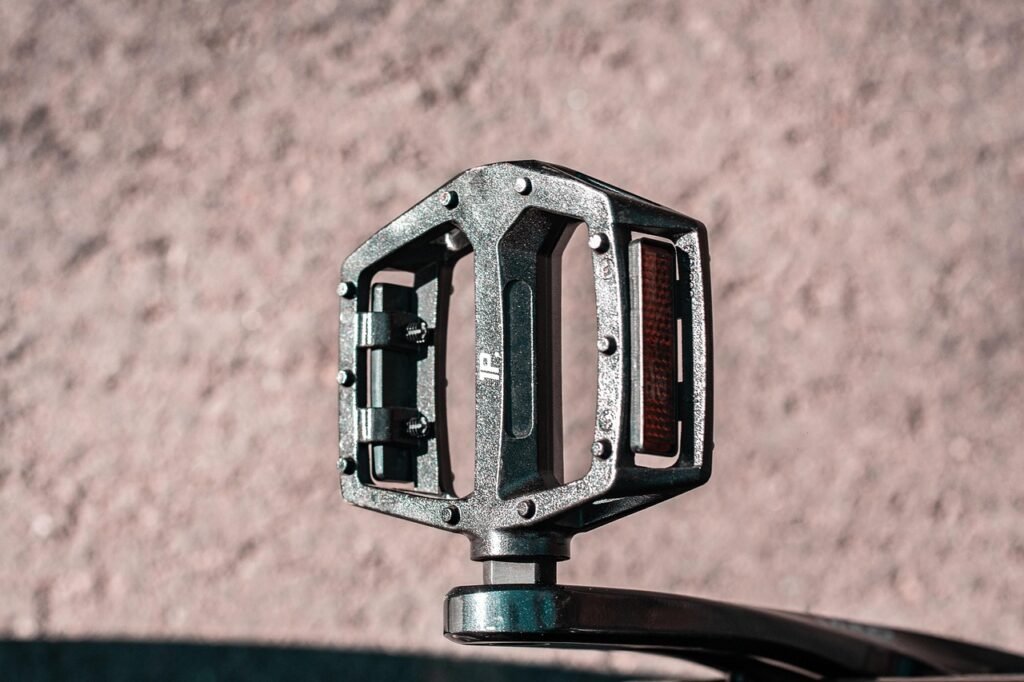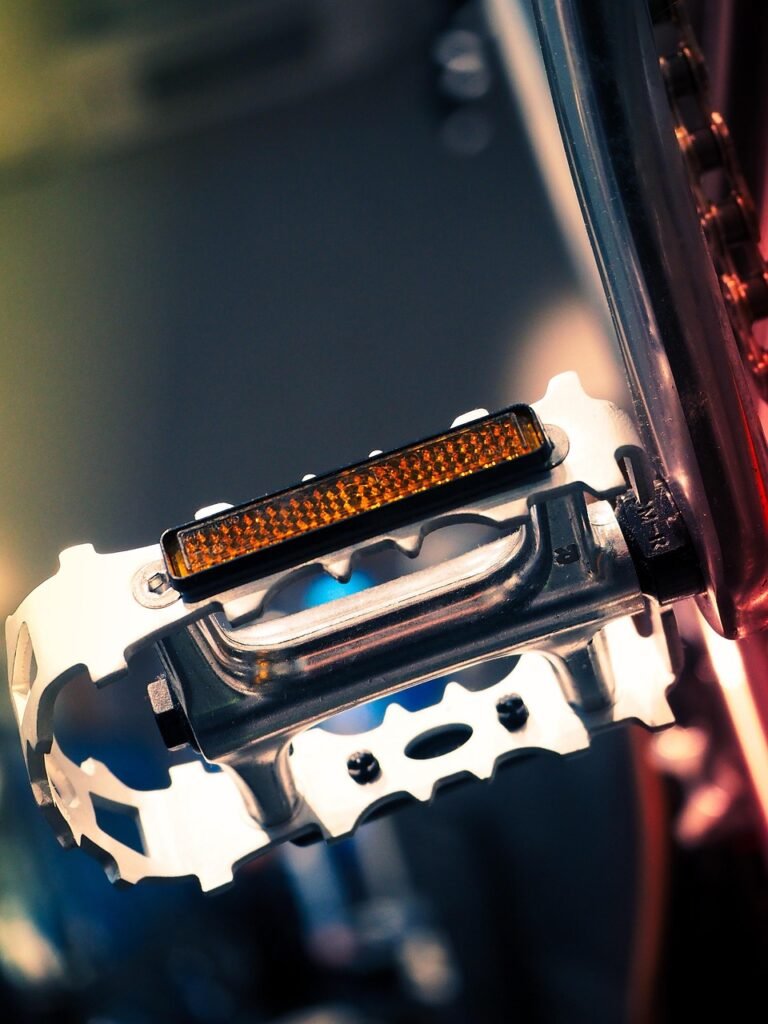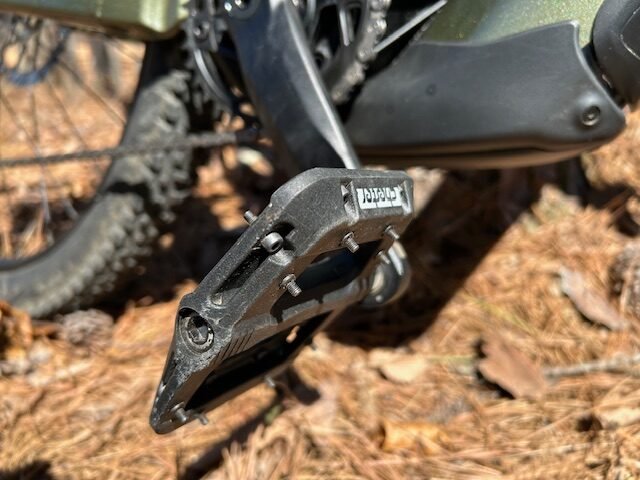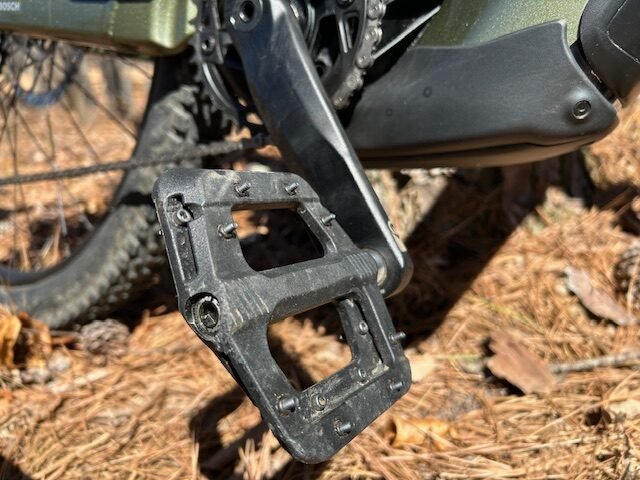You just rolled your brand new eMTB into your garage and isn’t she a beauty! First thing that comes to your mind? What should I upgrade? The easiest, and probably the best upgrade to do first, is to switch out the pedals. eMTB Manufacturers must find a balanced mix of components that deliver value to the rider but keep things profitable at a given price point. Pedals seem to be the universal target for cutting costs. So, today, let’s look at pedals, your first eMTB upgrade.
Whether you’re just getting into mountain biking, or you’ve been shredding singletrack for years, choosing the right pedals can make or break your ride. In this comprehensive guide, we break down the types of mountain bike pedals, what to look for when buying them, a quick history of their evolution, and some of the top-rated flat pedals under $100, including the pedals that I chose to upgrade my own eMTB.
Types of Mountain Bike Pedals
There are two main types of mountain bike pedals: flat pedals and clipless pedals.

Flat Pedals (Platform Pedals)
Flat pedals have a wide, stable platform and small pins to grip your shoes, and are best for beginners, downhill riders, enduro riders, and casual trail bikers.
Pros:
- Easy to get on/off
- Encourages skill development and better balance
- Ideal for technical terrain
Cons:
- Slightly less pedaling efficiency
- Can slip without grippy shoes
Clipless Pedals
Despite the name, clipless pedals involve clipping in using cleats mounted on your shoes, and are best for cross-country (XC), trail, and competitive riders.
Pros:
- Secure foot placement
- Improved power transfer
- Better efficiency on climbs and flats
Cons:
- Learning curve
- Not ideal for quick dismounts or tight, technical trails
What to Look for in a Mountain Bike Pedal
For Flat Pedals:
- Platform Size: Larger platforms offer more stability
- Grip Pins: Look for replaceable and adjustable pins
- Material: Nylon composite for budget; alloy for durability
- Bearings: Sealed bearings resist dirt and moisture
For Clipless Pedals:
- Cleat Compatibility (usually SPD 2-bolt)
- Float: Helps with knee comfort
- Tension Adjustment: Customizes how tightly you’re clipped in
- Platform Support: Some include a mini platform for added support
A Brief History of Mountain Bike Pedals
1970s-1980s: Pedals at the Dawn of Mountain Biking
In the 1980s, it was always easy to tell if a teen was into BMX or off-road biking by looking at their bloody, bruised, or knotted shins. Bikes, especially ones for trail riding, had the infamous rat trap pedals – otherwise known as shin-destroyers. Before there were “mountain bikes”, riders used modified cruisers or road bikes and switched out their black rubber pedals (with reflectors, of course) for metal rap trap pedals. These early pedals were slippery when wet, heavy, and lacked any real grip, despite the toothy metal tabs along the edges. Inevitably, your shins and those teeth would make painful contact.

As BMX bikes grew in popularity, rat trap pedals evolved into a lighter version called a “bear trap”. These pedals had sharper teeth that wrapped around the outside of the pedal, usually in a U-shape. They were great for securing the Vans that you were wearing. While they grip was much better, the adoption of the freewheel rear hub only increased the ongoing drama between shins and pedals, and you frequently backpedaled into a world of pain. That said, I loved every minute of it!
1990s: Toe Clips Fade, Clipless Takes Over
As mountain bikes developed, toe clips (cage-like straps attached to flat pedals) made a brief stand, as they enabled riders to gain efficiency on both the up stroke and down stroke. These, however, rapidly fell out of favor due to the better safety and efficiency of the newest innovation: clipless pedals.
In 1984, Look, a French ski-binding company, introduced the first clipless pedal for road cycling. Despite the name, these involve clipping in using cleats on special cycling shoes. A much safer and more efficient product, clipless pedals used a cleat system and eliminated toe clips and straps.
Six years later, in 1990, Shimano launched the SPD (Shimano Pedaling Dynamics) system, which became the first widely adopted clipless system for mountain bikes. SPD pedals revolutionized efficiency: now riders could pull up as well as push down, improving power transfer and control. Mountain bikers, especially cross-country riders, fully embraced clipless systems. Trail riders, everywhere, could now witness the endless comedy of mountain bikers coming to a stop and falling over because they forgot they were clipped in!
Welcome to the 21st Century: Flat Pedals Make a Comeback
In the early 2000s, mountain biking innovation fueled an explosion in popularity and sub-genres quickly developed. With the growth of freeride and downhill, riders began looking for pedals that were both grippy and easy to exit. Riders embraced flat pedals, a modern twist on the pedals they grew up with, for their quick-release capabilities and better bike control. Platform pedals evolved, adding metal pins for better grip, and BMX-style flat pedals became popular among downhill riders.
Today, improved materials (nylon composites, sealed bearings), and innovations in design have enabled pedals to become tailored to specific riding styles. Innovations in clipless pedals have also kept them relevant to mountain bikers and both flats and clipless now have dedicated fan bases.
Top 5 Flat Mountain Bike Pedals Under $100 (Based on Reviews)
Since you now know all I know about clipless pedals, let’s stick to flat pedals. I have only ridden clipless once, and I am solidly in the flat pedals camp! Now let’s look at some choices for your first eMTB upgrade!
1. OneUp Components Composite Pedals
- Rating: 4.8/5 (500+ reviews)
- Price: ~$50
- Highlights: Large platform, 10 pins/side, durable nylon
- Source: Pinkbike

- Rating: 4.7/5 (450+ reviews)
- Price: ~$60
- Highlights: Composite body, fully sealed, proven durability
- Source: Reddit MTB Thread
- Rating: 4.6/5 (1,000+ reviews)
- Price: ~$35
- Highlights: Aluminum body, strong grip, sealed bearings
- Source: OutdoorGearLab
- Rating: 4.8/5 (300+ reviews)
- Price: ~$50
- Highlights: Large platform, 10 pins/side, exceptional grip
- Source: off.road.cc
5. DMR V11
- Rating: 4.7/5 (200+ reviews)
- Price: ~$60
- Highlights: Vault-shaped composite body, durable internals
- Source: off.road.cc
Your First eMTB Upgrade – Pedals for Your Style
For my own bike, I chose the Race Face Chester pedals, based on reviews and having seen them in stores and on bikes, I felt that they were a good fit for my riding style. I put them on my Christmas List and Santa really came through! My review: I love them! My Cannondale Moterra 2 came with surprisingly grippy, but cheap plastic pedals. The Chesters, however, are a new level of grip, and I was astonished at the difference they made on the trail. Only negative I have about them is that the composite material gets scratched up easily. I’m not too worried about the battle scars they show, and I highly recommend them.
Mountain bike pedals are the direct connection between your power and the trail. Whether you choose flats for freeride confidence or clipless for XC efficiency, make sure they suit your riding style and conditions. And with plenty of high-performing flat pedals under $100, your first eMTB upgrade doesn’t have to break the bank!
What pedals are you riding on? Drop me an email and let me know, I love hearing from my readers!

